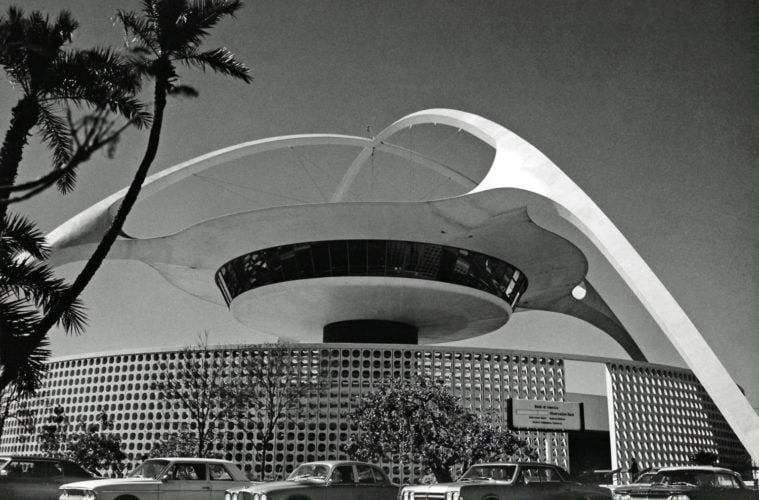For generations, the space age landmark at LAX with the giant parabolic arches has been a memorable place for locals and travelers to watch the planes from the observation deck or enjoy dinner and cocktails from the restaurant. A pristine example of Googie architecture and a time capsule from commercial air travel’s golden era, the Theme Building was, and still is, the place that when you see it, you know you’ve arrived in Los Angeles.
Today, the Bob Hope USO occupies the suites at the base of the building. What to do with the expansive glass-encased room 80 feet in the air – the room that’s played host to tourists, movie stars and aviation enthusiasts for 60 years – is yet to be revealed.
With a design allowing passengers to be standing level with the Theme Building, the Automated People Mover is sure to attract a new generation of admirers to the midcentury landmark. Los Angeles Conservancy Senior Director of Advocacy, Adrian Scott Fine, says, “There will definitely be a different perspective. The People Mover is being designed so that the view of the Theme Building is wide open. The train will bring passengers in so that when they exit onto the platform, for the first time ever, they’ll be at eye level with the Theme. This is the building that reminds everyone of The Jetsons. People still get really excited when they see it.”
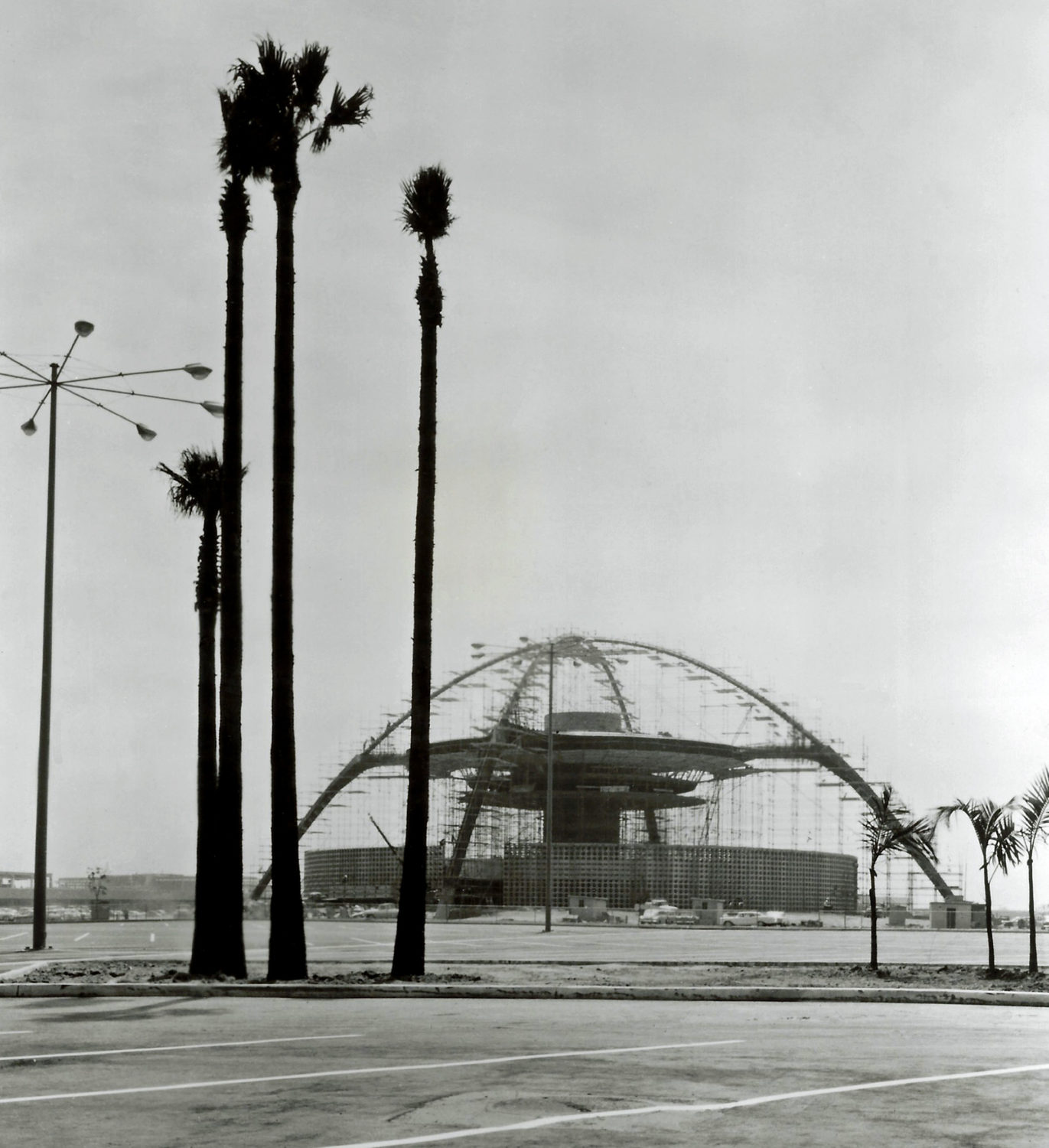
LAX Theme Building under construction (Courtesy Flight Path Museum LAX)
In 1960, construction began on the brand new LAX Jetport, officially ushering in the jet age. It would be the world’s first “total concept” airport – perfect for Los Angeles, which was poised to become the city of the future. It covered 3,000 square acres and 7 million passengers were expected to travel through it during its first year. With themed architecture for each terminal and a futuristic 13-story, 172-foot control tower, both L.A. and its glamorous new airport epitomized modern culture. When the Theme Building opened in 1961, it became an instant icon with its part-spider, part-UFO aesthetic.
On opening day, the Los Angeles Times wrote, “The structure will house a restaurant, ‘floating’ like a satellite 80 feet above the airport and on top of the glassed eating facility will be an observation deck with 360-degree views of the $50 million jet-age airport.”
Chief Architect Gin Wong partnered with leading firms Pereira & Luckman and Associates, Welton Becket and Associates, and Paul R. Williams, to create the $2.2 million Theme Building. Richard Bradshaw, who served as the structural engineer on the project, said, “These firms were well-known. This was a very prestigious job, but they really didn’t enjoy working together; they were actually shot-gunned together by the politicians at the airport!”
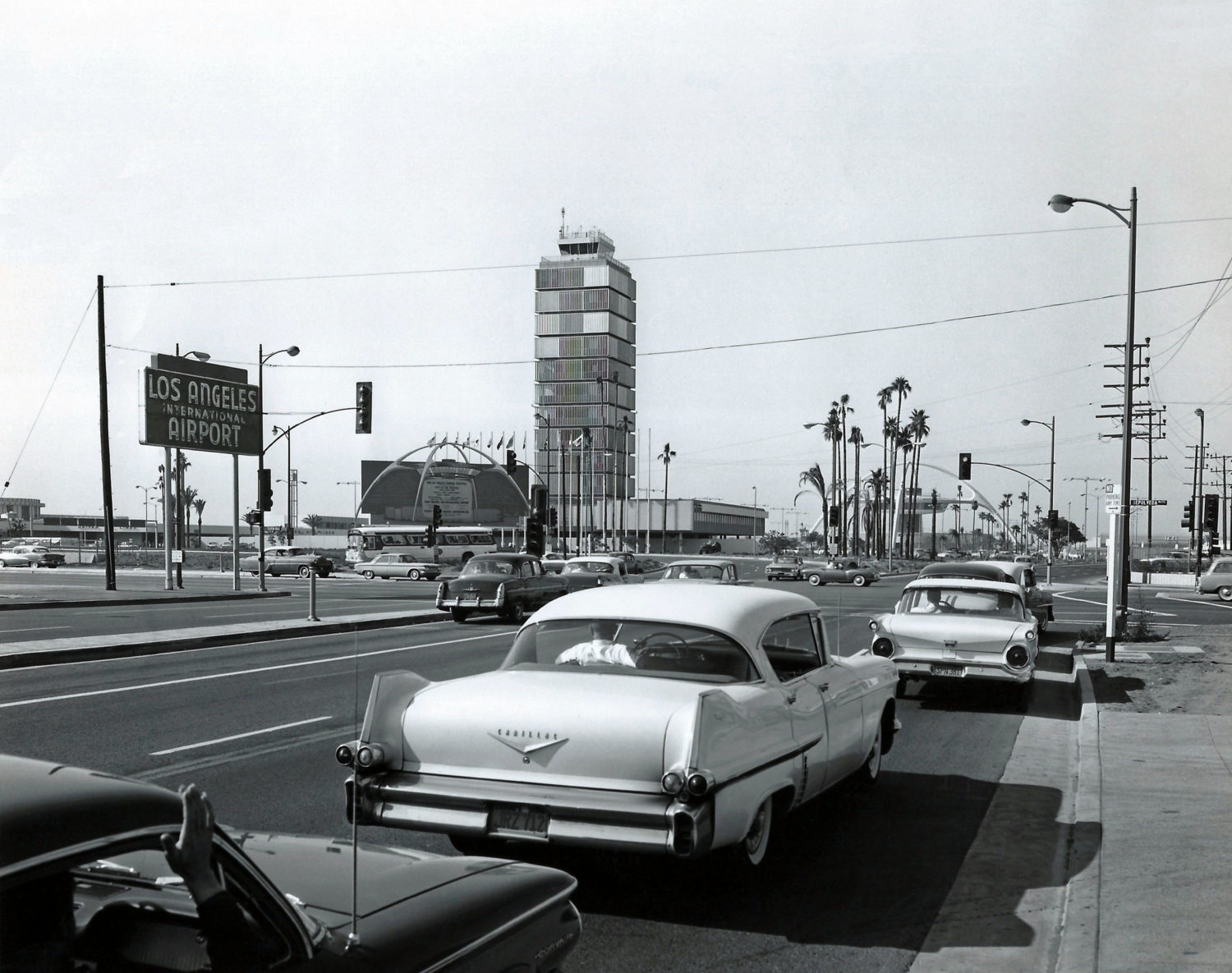
LAX Tower in 1961 (Courtesy Flight Path Museum LAX)
When it came to design, the building department at LAX rejected the original proposal for a shell-style edifice because of California’s propensity for earthquakes. The architects went back to work and came up with the current design. Upon its completion, Bradshaw said, “The Theme Building was the center of attention. Nobody had ever seen anything like it. Since then, it’s become the symbol of Los Angeles.”
Curator of Flight Path Museum LAX, Mike Machat, says, “Both the airport and the Theme Building were decidedly modern. Everything was inspired by space age culture at that time. Disneyland was just five years old when the Theme Building came along and The Jetsons aired just one year after it opened. Before that, the idea of flying from New York to Los Angeles in five hours only existed in the movies. The expansion of LAX and the addition of the Theme Building made it all possible.”
Midcentury aviation artist Ren Wicks’ illustrations depicted life aboard a modern aircraft as otherworldly, with spacious cabins, plush seats and ample room to recline. The TWA 707 featured the Starlight lighting effect, an in-cabin constellation projecting from the ceiling, giving passengers the experience of being transported through the galaxy in luxury and comfort.
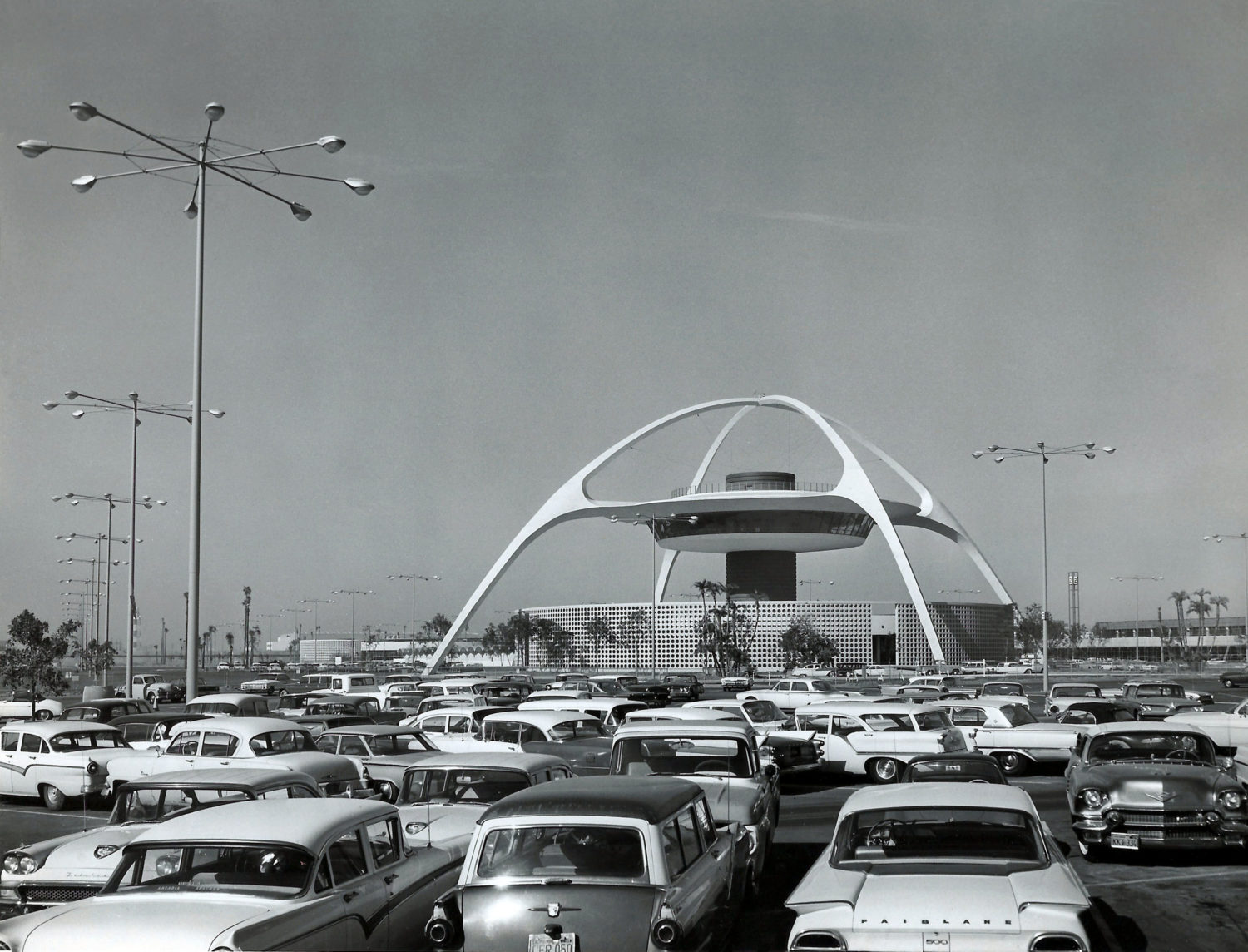
Welcome to LAX (Courtesy Flight Path Museum LAX)
The Theme enjoyed a robust existence for decades. As the airport grew, traffic congestion became a major issue. A sizeable expansion before the Summer Olympics in 1984 created more parking and increased road space outside of the terminals. Although it worked for a time, it wasn’t enough to accommodate the millions of people coming and going from the airport each year.
Increased security after 9/11 rendered once-bustling areas off limits to visitors and exacerbated existing problems with passenger drop-offs and pick-ups. The Encounter restaurant opened in 1997 and was a popular dining spot for most of its 16 years in operation, though heightened safety measures throughout the airport contributed to its downturn. Fine recalls, “After 9/11, it was hard to enjoy travel the way we had before. People couldn’t explore the airport anymore. They couldn’t meander like they once had. The restaurant inside the Theme at that time suffered because of it.”
In 2007 the building underwent a three-year $14 million seismic retrofit after a piece of one of the arches detached and fell, hitting the restaurant’s roof, though Fine notes, “The building is in very good structural standing today.”
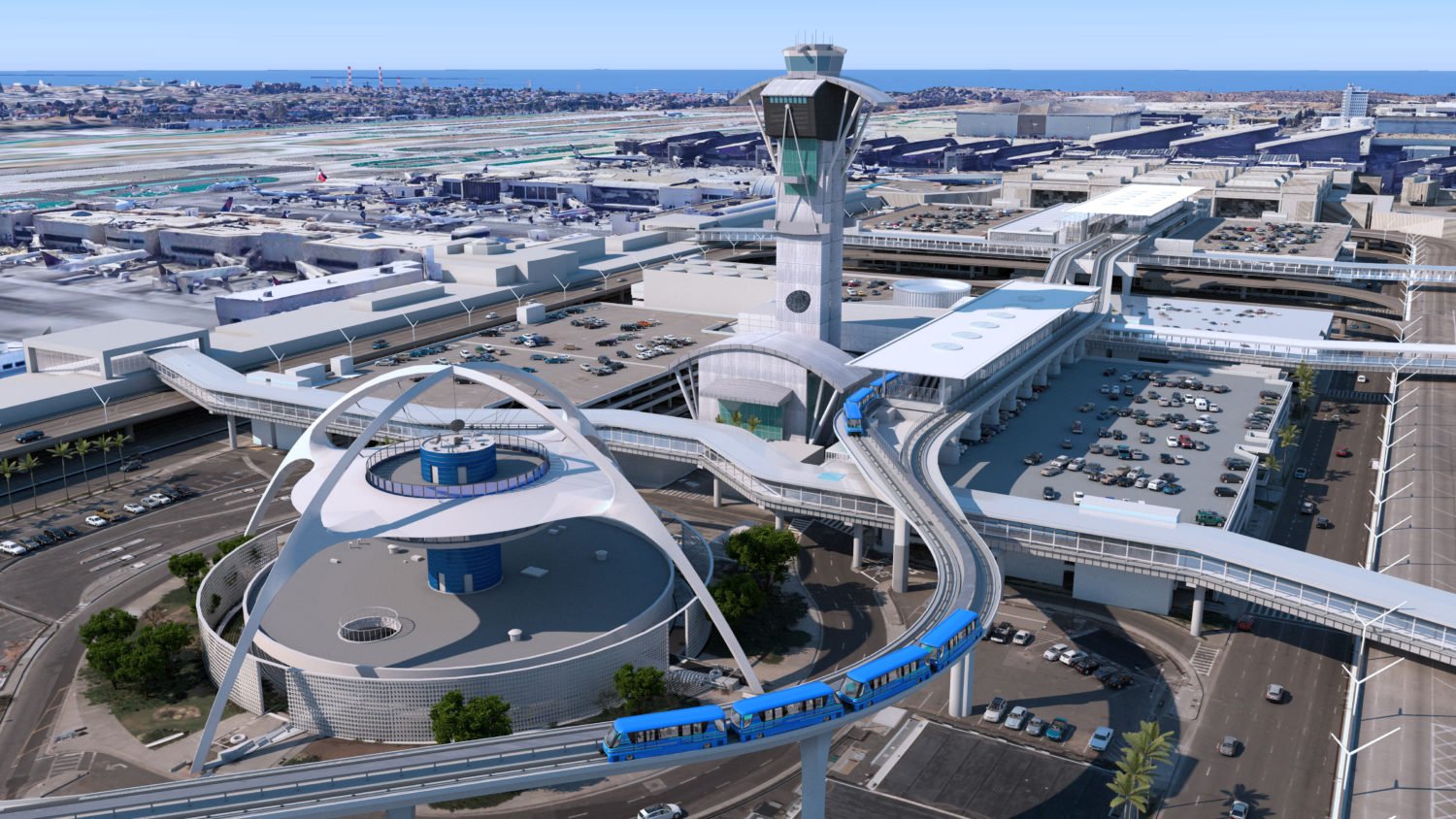
Rendering of the LAX People Mover (Courtesy Los Angeles World Airports)
As far as how to reinvent the space, ideas have been discussed by airport and city planning officials, including a hotel similar to the revamped TWA terminal at JFK Airport. But Machat explains, “The People Mover will border the northern edge of the Theme Building. Because it’s surrounded by roads, a hotel won’t work. The secret to the TWA hotel is there was ample space to work with. That original iconic terminal is untouched with two six-story hotel structures built behind it on open land.”
The installation of the People Mover will not only ease the long-standing issue of bottlenecked traffic, it will change the way the Theme Building is experienced.
Fine notes, “There’s been lots of talk about how we can reactivate the Theme. LAX is constantly evolving to accommodate the large volume of travelers. We have to find a way to address that growth while preserving the cultural legacy of this important landmark. People love the Theme Building and it will always be the centerpiece of L.A.”
Editors Note: And fear not, the iconic mosaic-tiled hallways (featured most recently in “Once Upon a Time in Hollywood) aren’t going anywhere either. LAX reps tell us the ones in Terminal 3 are being preserved and will be back once the project is complete.
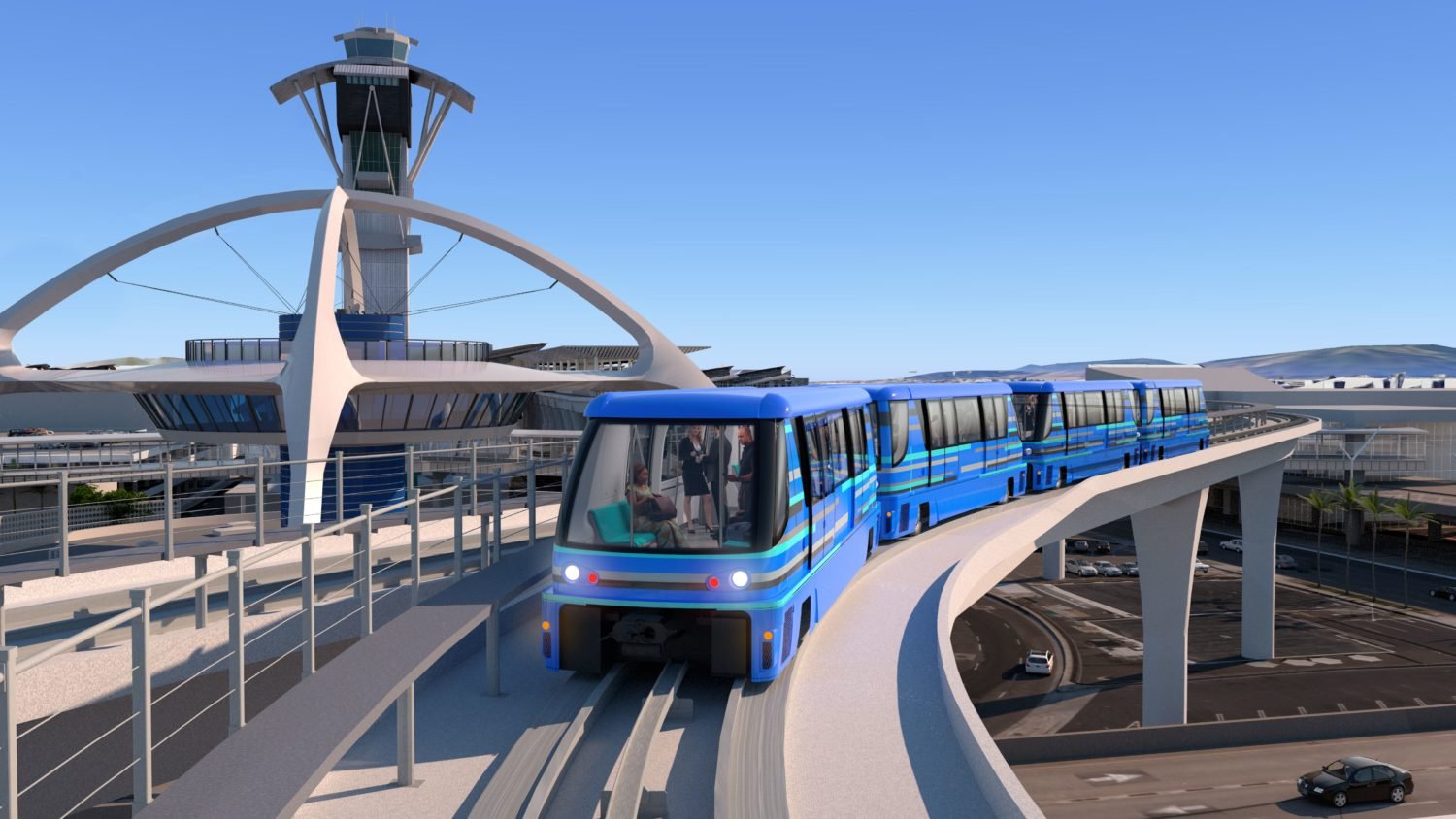
Rendering of the LAX People Mover (Courtesy Los Angeles World Airports)
Advertising disclosure: We may receive compensation for some of the links in our stories. Thank you for supporting LA Weekly and our advertisers.

